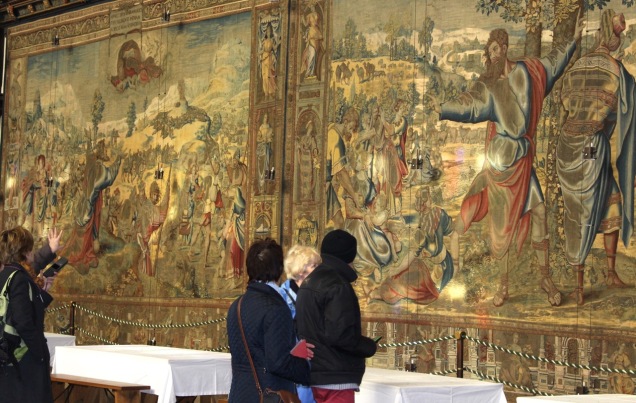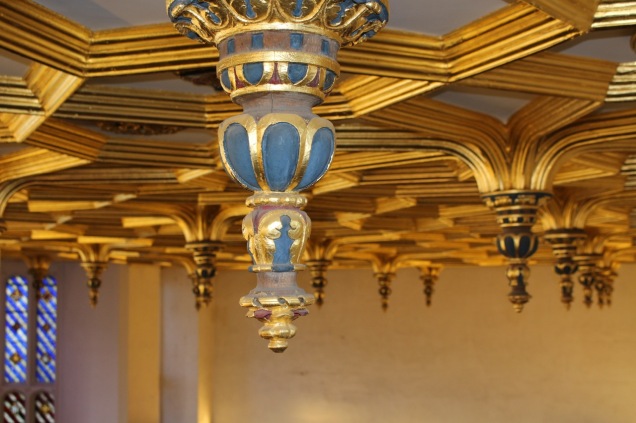What’s your background in heritage science?
I studied objects conservation before I completed a PhD in Archaeological Sciences at Bradford University. In my research for my thesis I discovered how the Late Roman empire debased their coins and made them look silvery with amalgam plating. There were many times during this project that I felt like a spy trying to uncover the top secrets of the highly guarded Mint! Since then, I have worked in various research areas such as preventive conservation, conservation science, environmental science, data management, modelling, material science and ancient technology. Since 2010 I have been UK expert in the CEN/TC 346 Conservation of Cultural Property standards project and member of the BSI Committee B/560 Conservation of Tangible Cultural Heritage. I am an accredited conservator, member of ICON (Institute of Conservation) and a Trustee of the National Heritage Science Forum.
What’s your role at Historic Royal Palaces?
In the Conservation and Collections Care department where I work, we have under our care across our five palaces, over 4,000 rooms and 13,000 artefacts ranging from the magnificent Rubens ceiling at the Banqueting House, to royal state beds, glorious tapestries, and a unique Royal Ceremonial Dress Collection. My team uses scientific research to uncover secrets on how these wonderful objects were made, what changes they have experienced through their long lifetime and which are the most up-to-date methods for their care. Our work is interdisciplinary as it often requires input from our conservators, curators and other stakeholders across our organisation. We work also closely together with other heritage organisations, universities and research institutions in collaborative research projects. However, the most satisfying part of my role is the training and supervision of the next generation of heritage scientists and I am delighted that HRP provides support to graduates through a scholarship to enrol at the UCL’s MRes in Heritage Science.
What’s been the most exciting/challenging thing you’ve worked on recently?
The spectacular Tudor tapestries in the Great Hall and Great Watching Chamber at Hampton Court Palace are nearly five hundred years old and have been on display for over a century. The last three years I have been working on a long-term research project to develop sustainable methods for their protection and allow their display for the next hundred years. Temperature, humidity, light and even dust can damage our tapestries by fading their colours or making their silk, woollen and metal threads brittle and fragile. As the tapestries are very large we used many sensors in front of each one (around 140 for each location!) to record environmental changes. I will never forget the day we installed our equipment in the Great Hall. It was almost midnight when we finished our work and after everyone left I had this magnificent space just for myself!

Our monitors gathered data for a whole year in each room so to process all this information we use data mapping. Maps are very helpful because they allow us to identify which are the high risk areas on the tapestries. Now we move onto investigating protection measures, drawing from the latest research. During this project I have also the privilege to work with a number of experts from UCL Centre of Sustainable Heritage, IBM Research, Willanow Palace Museum, and Historic Scotland using cutting edge technology and expertise.

Who inspires you?
I am fascinated by the early philosophers and alchemists who provided the foundations for a number of modern scientific disciplines.
What do you love most about your job?
My lab is in a Palace! I am based at Hampton Court Palace but I am travelling to our other Palaces (Tower of London, Kensington Palace, Kew Palace, Banqueting House and Hillsborough Castle in Northern Ireland) if there is a particular investigation we need to carry out. Also every day is different! One day I might have meetings or lab work and the next day I might climbing up in a roof space or reaching behind the scenes areas in the Palace. Recently, I spent a whole day working on a scaffold in the Great Watching Chamber just below the magnificent ceiling (the view was amazing!) to install a “smart” liquid crystal film which we are testing as a protection measure from light for our tapestries.


But the most important thing I love about my job is the fact that it is so diverse and challenging. Our buildings and collections are unique and they require us to be innovative and well informed. We need to be familiar with a range of scientific disciplines particularly chemistry, physics, and the applied sciences such as imaging, colour science and environmental science to be able to provide the best care they deserve.
In a single sentence, tell us what’s great about heritage science.
Heritage science applies a wide range of scientific methods and skills to care for wonderful works of art!
